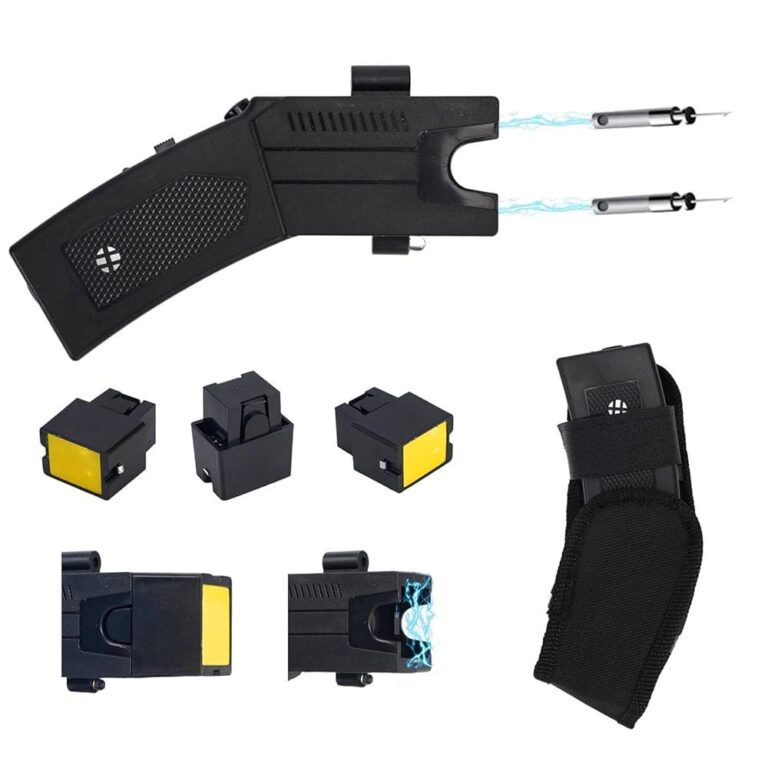Table of Contents
- Understanding the Mechanics of Your Stun Gun for Maximum Impact
- Choosing the Optimal Target Areas for Quick Incapacitation
- Mastering Grip and Handling for Swift Deployment
- Practicing Safe and Legal Usage in High-Pressure Scenarios
- To Conclude
Understanding the Mechanics of Your Stun Gun for Maximum Impact
At its core, a stun gun operates by delivering a high-voltage, low-current electrical charge designed to disrupt the attacker’s muscle functions temporarily. This technology exploits the body’s neuromuscular system, causing involuntary muscle contractions that incapacitate an assailant long enough for you to make a safe escape. The effectiveness of this discharge depends not only on voltage but also on the quality of the contact points and the duration the probes remain in contact with the attacker’s body. Understanding how the electrodes transmit the electric shock is crucial-ensuring that the probes strike exposed skin or thin clothing dramatically increases the stun gun’s stopping power.
Maximizing the device’s impact requires familiarity with its specific mechanics and features. Consider the following key factors:
- Proper Grip and Positioning: Maintain a firm grip to avoid a weak or intermittent connection, and aim for areas such as the torso or limbs for maximum neuromuscular disruption.
- Charge Duration: Applying the stun gun for 2-3 seconds ensures a stronger immobilizing effect without compromising your control.
- Device Maintenance: Regularly check battery levels and probe integrity to maintain consistent performance when it matters most.
Choosing the Optimal Target Areas for Quick Incapacitation
When deploying a stun gun, precision is critical to ensure rapid and effective incapacitation. The primary focus should be on the areas of the body with high concentrations of nerves and muscle mass that facilitate quick disruption of motor functions. Targeting zones such as the shoulders, upper back, and sides of the torso will optimize the electrical charge’s interference with the central nervous system. Avoiding thick clothing or heavily insulated materials also improves contact and efficacy since stun guns require direct skin contact, or at least minimal obstruction, to deliver maximum voltage.
Key zones to consider include:
- Neck and collarbone area: Rich in nerve endings and vulnerabilities, but exercise caution to avoid potential severe injuries.
- Upper arms and biceps: Targeting muscle groups here can quickly disrupt movement.
- Lower abdomen and groin: These regions contain sensitive nerve clusters that can cause immediate muscle incapacitation.
Proper aim combined with firm contact facilitates the stun gun’s debilitating effects, helping you neutralize threats efficiently and regain control in close-quarters encounters.
Mastering Grip and Handling for Swift Deployment
Achieving a confident and secure hold on your stun gun is crucial for rapid and effective use under pressure. Start by ensuring your grip is firm but not overly tight to maintain dexterity. Position your thumb near the activation button for immediate access without sacrificing control. The device should rest comfortably in your palm, with fingers wrapped securely around the handle. This balanced grip allows you to deploy the stun gun swiftly, minimizing any delay that could escalate the threat. Remember, a practiced grip becomes second nature, so regular handling during training sessions is key to muscle memory development.
To enhance handling skills, focus on these critical elements:
- Consistent practice: Familiarize yourself with the weight and feel to improve reaction time.
- Proper wrist alignment: Keeps your arm poised for quick advancement and maximizes impact accuracy.
- Secure retention: Prevents accidental drops or disarming attempts by assailants.
- Effective draw technique: Smoothly transitioning the stun gun from holster to defensive posture reduces exposure time.
Practicing Safe and Legal Usage in High-Pressure Scenarios
In moments of intense stress, maintaining composure can be the difference between effectively neutralizing a threat and exacerbating a dangerous situation. Always remember that legal boundaries vary by jurisdiction, and it is crucial to understand the specific laws governing stun gun possession and use in your area. Before engaging in any defensive action, quickly evaluate whether you are within your legal rights to deploy the device. Clear awareness of local regulations not only prevents legal repercussions but ensures your actions are justifiable and responsible in high-pressure encounters.
When tension escalates rapidly, rely on these fundamental practices to uphold safety and legality:
- Verify the threat level: Use the stun gun only when there is immediate danger to your wellbeing or that of others.
- Aim for vulnerable areas: Target the intended zones prescribed by your training to immobilize the aggressor efficiently and minimize unnecessary harm.
- Legally carry documentation: Keep any required permits or licenses accessible to demonstrate compliance if questioned by authorities.
- Practice restraint post-use: After deploying your device, disengage safely and contact law enforcement promptly to report the incident.
To Conclude
In conclusion, mastering the effective use of a stun gun in close-quarters defense is about more than just having the device on hand-it requires understanding proper techniques, maintaining situational awareness, and practicing regularly to build confidence. When used responsibly and strategically, a stun gun can be a powerful tool to deter threats and create critical moments to escape danger. Always prioritize safety, stay informed on local laws, and remember that your best defense is a combination of preparedness and calm decision-making. Stay safe out there!Check Our Other Blogs
- StunGun – Your Trusted Source for Stun Guns, Laws, and Self-Defense Tips
- PepperSprayLaws – Your Trusted Resource for Pepper Spray Information
- StunGunLaws – Your Trusted Guide to Stun Gun Legality and Safety





